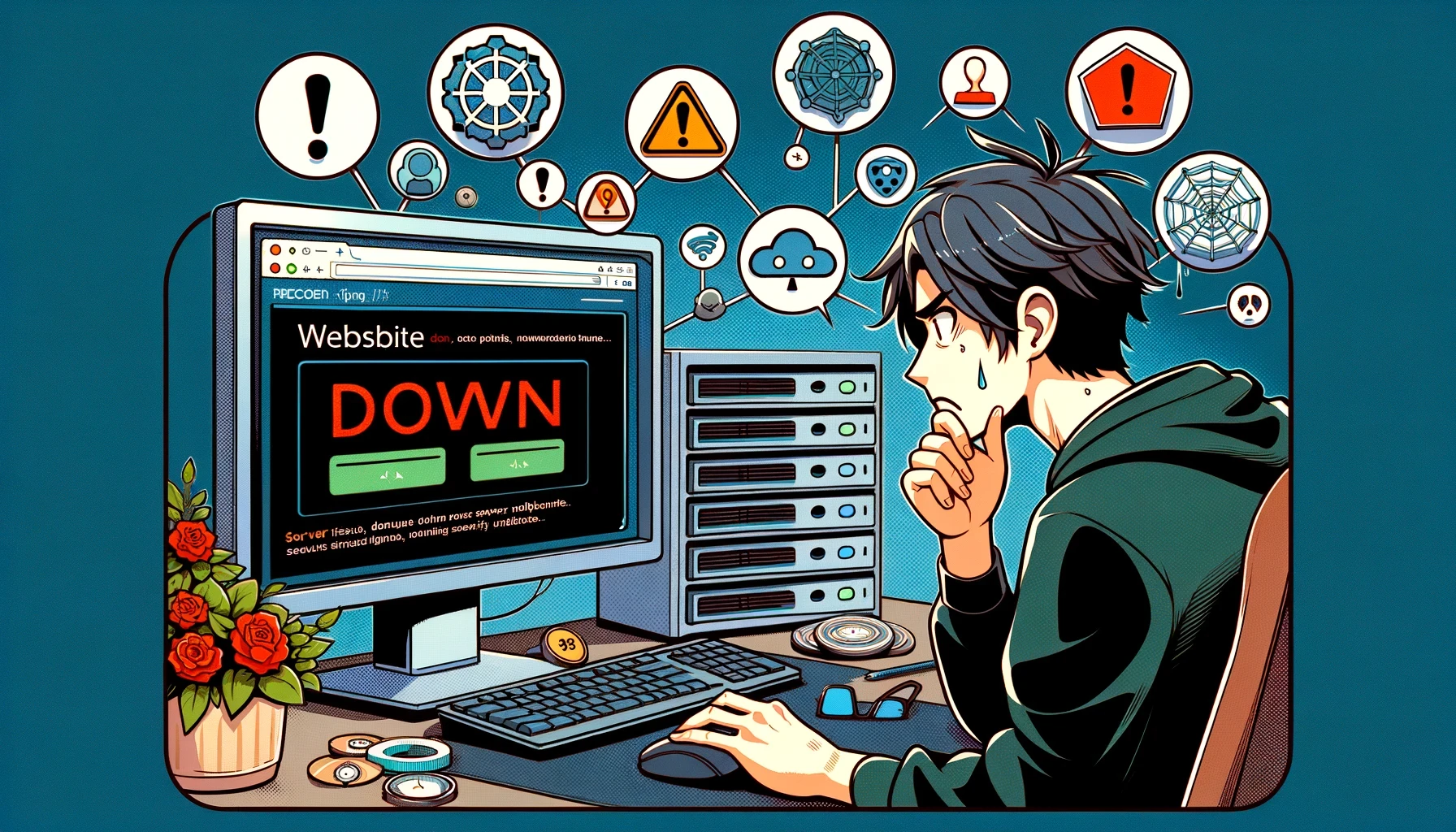Why Is My Website Down? Common Causes and Solutions
May 26, 2024

Experiencing website downtime can be frustrating and detrimental to your business. Understanding the reasons behind it can help you address the issues promptly and prevent future occurrences. In this article, we’ll explore common causes of website downtime and provide solutions to get your site back up and running.
Common Causes of Website Downtime
Server Overload: One of the most frequent causes of website downtime is server overload. When a server receives too many requests simultaneously, it can become overwhelmed and crash. This often happens during traffic spikes, such as during a sale or promotional event.
Software Issues: Outdated or incompatible software can lead to website crashes. If your website’s software, including the content management system (CMS), plugins, or themes, is not updated regularly, it can cause conflicts and result in downtime.
DDoS Attacks: Distributed Denial of Service (DDoS) attacks flood your server with traffic from multiple sources, overwhelming it and causing your website to go down. These malicious attacks aim to disrupt your service and can be challenging to mitigate.
Hosting Problems: Sometimes, the issue lies with your hosting provider. Shared hosting environments, in particular, are prone to downtime if other websites on the same server consume too many resources. Additionally, hosting providers may experience outages due to technical issues or maintenance.
DNS Issues: The Domain Name System (DNS) translates domain names into IP addresses. If there are problems with your DNS configuration or if your DNS provider experiences outages, your website may become inaccessible.
Network Issues: Network problems can cause your website to appear down for some users while it remains accessible to others. These issues can arise from ISP problems, routing errors, or internet backbone disruptions.
Hardware Failures: Physical server hardware failures, such as hard drive crashes or power outages, can also cause website downtime. While less common, these issues can be severe and require significant time to resolve.
Human Error: Mistakes made during website updates, server configurations, or code deployments can inadvertently cause your website to go down. Human error remains a common cause of downtime despite automation and safeguards.
How to Diagnose and Resolve Website Downtime
Check Your Hosting Provider’s Status: Start by checking if your hosting provider is experiencing issues. Many providers have status pages where they report outages and maintenance schedules. If the problem is on their end, you may need to wait until they resolve it.
Monitor Server Load: Use monitoring tools to track your server’s performance and identify if it’s experiencing an overload. Consider upgrading your hosting plan or implementing load balancing to distribute traffic more evenly.
Update Software: Regularly update your CMS, plugins, themes, and server software to ensure compatibility and security. Check for updates and apply them during low-traffic periods to minimize impact.
Implement Security Measures: Protect your website from DDoS attacks by using a content delivery network (CDN) with DDoS protection, implementing firewalls, and using security plugins. Regularly scan for vulnerabilities and address them promptly.
Check DNS Settings: Verify your DNS settings and ensure they are correctly configured. Use reliable DNS providers and consider setting up redundant DNS servers to minimize the risk of DNS-related downtime.
Address Network Issues: Use tools like traceroute or ping to diagnose network problems. Contact your ISP if you suspect issues on their end. Consider using a CDN to improve website availability and performance across different regions.
Backup and Restore: Regularly backup your website and server data. In case of hardware failure or other critical issues, having a recent backup allows you to restore your website quickly.
Review Recent Changes: If your website goes down shortly after making changes, review those changes for potential errors. Roll back any recent updates or configurations to see if they caused the issue.
Preventative Measures to Minimize Downtime
Use Reliable Hosting: Choose a reputable hosting provider with a strong track record of uptime and support. Consider dedicated or cloud hosting for better performance and reliability.
Implement Redundancy: Set up redundant systems, such as multiple servers or data centers, to ensure your website remains accessible even if one server fails.
Regular Maintenance: Perform regular maintenance, including software updates, security scans, and performance optimizations, to keep your website running smoothly.
Monitor Your Website: Use website monitoring tools to track uptime, performance, and security. These tools can alert you to issues in real-time, allowing you to address them promptly.
Educate Your Team: Train your team on best practices for website management, including careful updates, regular backups, and monitoring. Reducing human error can significantly minimize downtime.
Conclusion
Website downtime can have a significant impact on your business, but understanding the common causes and how to address them can help you maintain a reliable online presence. By implementing proactive measures and using the right tools, you can minimize downtime and ensure your website remains accessible to your users.
For a comprehensive guide on diagnosing and resolving website downtime, check out this resource on TechRepublic.
To monitor which sites are currently down, you can use tools like DownDetector.
For more information on how EzUptime can help you monitor your website and prevent downtime, visit our homepage.
EzUptime is a simple yet efficient Uptime Monitoring service
Learn more
